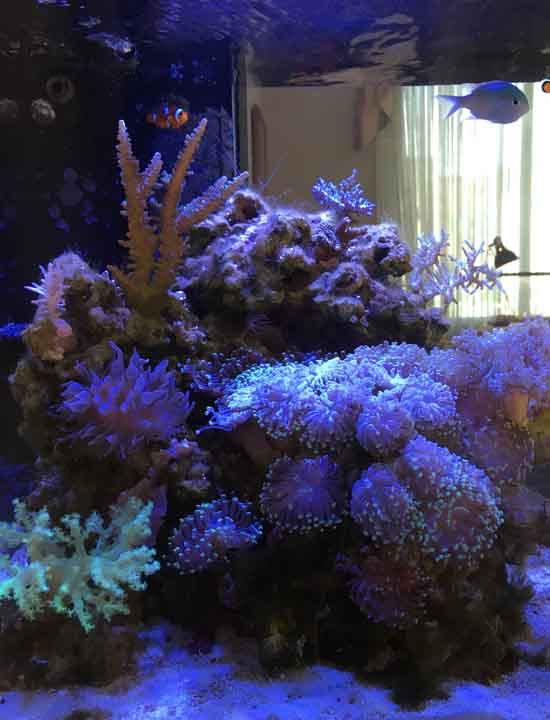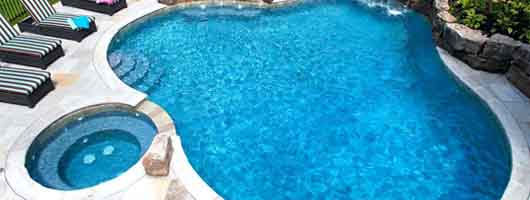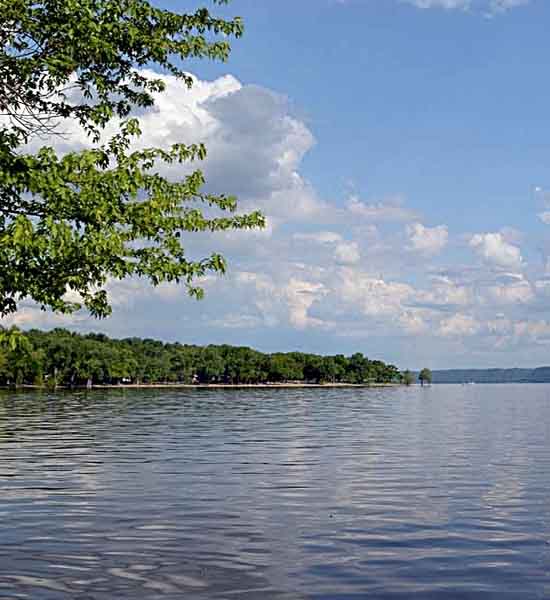WATER TREATMENT
Zeolite – Clinoptilolite is an excellent filtering and absorbing medium. It offers 3 types of filtration at the same:
Mechanical Filtration Molecular Sieve
Despite sand and coal being widely used; zeolites, in appropriate sizes and amounts, are more effective. Sand filters are able to filter particles down to 20-40 microns. However, zeolite can filter particles down to 4 microns. Moreover, filters with zeolite reduce backwashing needs by half.
Chemical Filtration Cation Exchange
Zeolites have high cation exchange capacities. Ammonia (NH4), heavy metals (Pb, Cu, Cd, Zn, Co, Cr, Mn and Fe; Pb, Cu as high as 97 %), toxins, low level radioactive elements (Cs, Co, Sr, Ag), petrochemicals are easily adsorbed by Zeolite – Clinoptilolite.
Biological Filtration Nitrification
Biological filtration works with natural bacterial growth which mineralizes nitrogen components. Large surface area provided by zeolite is perfectly suitable for autotrophic bacterial colonies which converts ammonia to nitrite and then nitrite to nitrate by aerobic and anaerobic nitrification. Zeolite employed systems process nitrification at optimum levels.
Thanks to its high cation exchange capacity, large surface area, highly porous crystal structure, eco-friendly composition and low cost it has a wide range of application for water treatment.
- Adsorbs toxic components such as heavy metals and ammonia.
- Filters particulates down to 4 microns in size.
- Provides wide space for nitrification.
- Increases the overall quality and health of the ecosystems.
- Prevents algae and moss formation.
- Provides optically and biologically clean water.
- Removes gases and bad odours.
Aquaculture & Aquarium

Aquaculture has two vital parameters: dissolved oxygen and ammonia. Compared to dissolved oxygen, ammonia concentration is more difficult to control. Fish & shrimp’s urine, feces and accumulating wasted feed, all produce ammonia. Ammonia is easily dissolved in aqueous solution and converts into ammonium ion (NH4+). Ammonia is toxic to aqueous life and reduces oxygen carriage capacity of hemoglobin. Furthermore, ammonia damages the gills and prevents fish & shrimps to get oxygen. According to recent records, up to 90% of the fry can die due to toxic ammonia, during production.
The release amount of ammonia is directly proportional to fish activity, water temperature and nutrient amounts. Dissolved ammonia concentration and toxicity increases by temperature and pH; decreases by dissolved oxygen concentration. Toxic ammonia can easily be absorbed by Zeolite – Clinoptilolite. Dissolved oxygen concentration in the water increases very quickly by the usage of zeolite. Moreover fish & shrimp feces and wasted feed are filtered mechanically by zeolite. Modern aquaculture industry is not only facing toxic ammonia problem, but also heavy metal and toxin problems due to feed ingredients. Apart from ammonia absorption, zeolite is a perfect binder for heavy metals and toxins. It enhances the overall health of the aquaculture & aquarium.
Zeolite’s ion exchange efficiency is not effected by temperature or pH changes. The efficiency or ammonia removal is directly proportional with the purity and ion exchange capacity of the zeolite. Low quality zeolites will absorb low levels or ammonia. Don’t use low quality zeolite for aquaculture. Always prefer feed grade zeolites for aquaculture. Zeolite is also a perfect feed additive for fish meals. For fish feed additive application, please refer here.
Pool & Spa

With its high ion exchange aspect and environment friendly structure, Zeolite – Clinoptilolite has replaced ordinary sands as pool filtering material in Europe, America and Australia. The awareness about the harmful chemicals used for the maintenance of pools leads conscious pool owners to choose healthy products like Zeolite.
Comparison of Zeolite and Sand
| ZEOLITE | SAND | |
|---|---|---|
| Filtration | > 4 microns | > 30-40 microns |
| Porosity | +++++ | ++ |
| Surface Area | +++++ | +++ |
| Absorption of Ammonia | Yes | No |
| Absorption of Heavy Metals | Yes | No |
| Removal of Bad Odours | Yes | No |
| Bulk Density* | ≈ 0,8 kg / lt | ≈ 1,2 kg / lt |
* Zeolite is a filtration medium that is 15% lighter in weight than sand. You can fill your filter with ≈ 85 kg of Zeolite instead of 100 kg of sand.
Utilisation of Chlorine in Pools and The Formation of Chloramine
Bad odours, skin irritations, eye inflammations and red eyes are just some of the issues encountered by users of a properly maintained pool. Contrary to common belief, the root cause of those problems is not chlorine itself but is chloramine, which is formed with the combining of free-floating chlorine and ammonia which comes from sweat, body grease and urine. In order to address and solve this problem, it is necessary to increase the amount of free-floating chlorine and to decrease the amount of free-floating ammonia in water.
Zeolite absorbs the ammonia in the water from sweat, body grease and urine at a rate of 95%. It prevents the free-floating chlorine in the water from getting saturated with ammonia and from becoming ineffective against microbes. By increasing the effectiveness of chlorine use, Zeolite decreases the amount of chlorine required in the water. Zeolite decreases the overall operating costs of a pool by reducing the requirmenet of chemicals and reduces backwash by up to 50%. It also minimizes eye and skin irritations.
With its high ion exchange capacity, environment-friendly structure and low cost, Zeolite (Clinoptilolite) has replaced ordinary sands and glass as pool filtering media in Europe, America and Australia. Its use is increasing and getting more widespread worldwide day by day.
Ordinary sand is an inert material and it is chemically completely passive. Zeolite, thanks to its high ion exchange capacity removes the ammonia from the water resulting from dissolved sweat and urine (at a rate of 95%). It also absorbs and removes heavy metals, as well as removing suspended particles in the water down to 4 microns in size.
Attention
Zeolite is a highly porous mineral. Dust inside the pores can blur the water at first usage. In order to prevent blurring of the water, please back/wash your pool filter until the dust in its pores is completely removed and the water is clear.
Rehabilitation of Natural Waters

Eutrophication, or more precisely hypertrophication, is the depletion of oxygen in a water body, which kills aquatic animals. It is a response to the addition of excess nutrients, mainly phosphates, which induces explosive growth of plants and algae, the decaying of which consumes oxygen from the water. Many lakes, ponds, rivers and several other water sources are facing this serious problem due to human activity in watersheds. Eutrophication is almost always induced by the discharge of phosphate-containing detergents, fertilizers, or sewage into an aquatic system. There are three particularly troubling ecological impacts: decreased biodiversity, changes in species composition & dominance, and toxicity effects.
Apart from cutting the sources of eutrophication, the contaminated waters must be treated to bring the quality back again. Natural, environment friendly products like zeolite are quite successful in fighting Eutrophication; since it is a budget and eco-friendly mineral.
Artificial lakes and ponds also face this problem since in these human made lakes and ponds, there is no productivity or liveliness inside the water. Artificial lakes and ponds always have to be monitored for Eutrophication and the water needs treatment with Zeolite or similar filtering mediums.
- Rehabilitates nitrogen and phosphorus enriched natural waters.
- Prevents eutrophication and algal bloom in natural waters.
- Reduces pesticide, herbicide, fertilizer and nutrient leachate to natural waters.
- The filtering abilities of Zeolites offer a versatile and environmental friendly option to capture most contaminants found in water systems.
- Zeolite keeps water optically and biologically clean.
- Improves overall quality and health of the ecosystem,
- Prevents moss and algae growth.
- Ammonia promotes algal growth in aqueous environment.
- Algae covers the Zeolite surface to reach more ammonia and blocks Zeolite from adsorbing ammonia.
Zeolite is used for drinking waters, to improve the quality, to soften and purify the water.
- Improves water clarity (suspended solids reduction)
- Physically filters pathogens, other bacteria and their spores.
- Removes ammonium and heavy metals.
- Softens and purifies the water.
- Increases overall quality.
NOTE
For waste water treatment, please visit our waste treatment page.
Zeolite is a rigid material that doesn’t vanish by crumbling or dissolving.
Zeolite is a 100% natural material. It’s not toxic at any condition and perfectly safe.
Zeolite is used in the production of special ceramic bodies used as filtering media. Zeolite provides high porosity, high cation exchange capacity and elasticity to ceramics. These ceramic products can filter fine particles, smelly gases, heavy metals, low level radioactive elements, toxins and such.

